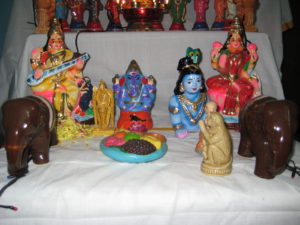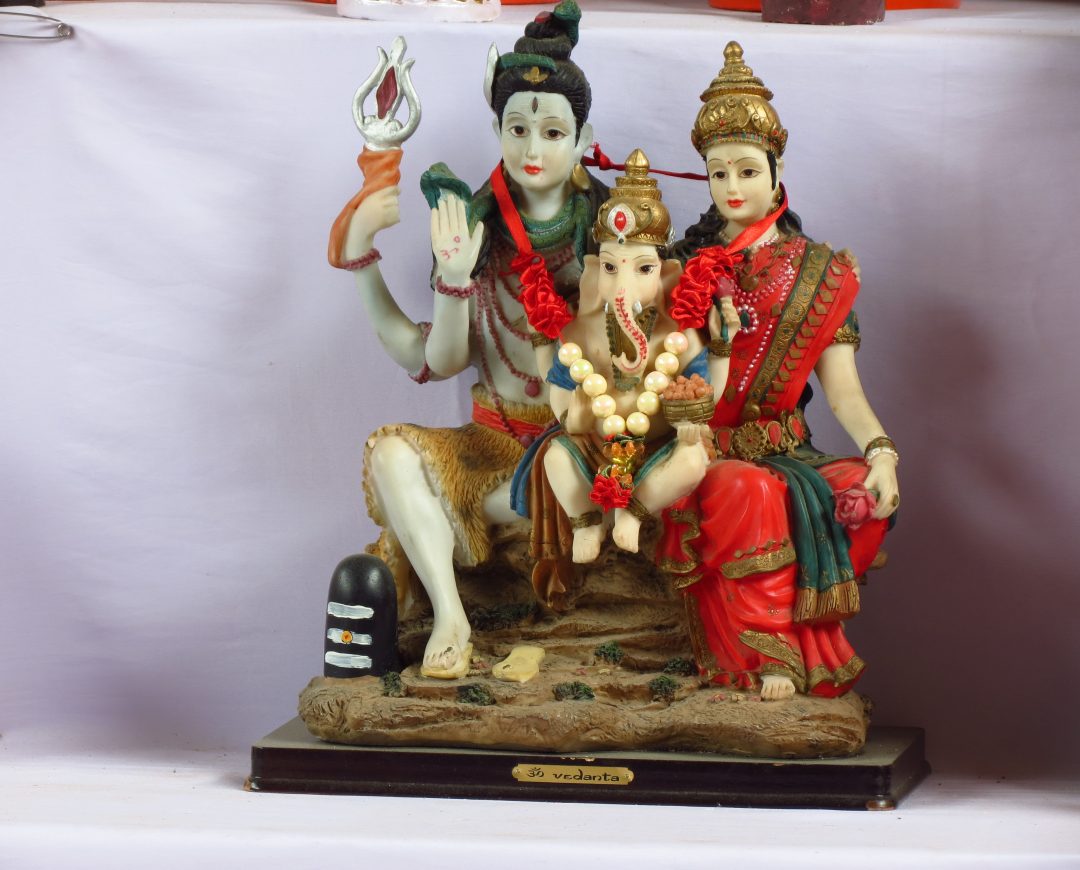Nav’ means nine and Ratri’ means nights. Navrathri is the period of nine days and nights that draws relevance from Indian mythology. The Navrathri festival celebrates the victory of Goddess Parvati over the demons causing misery to the Gods and saints. The tenth day is the ultimate defeat of the demons, marking conquest of good over evil.
This nine-day festival is celebrated in various manners in different parts of the country. In South India, a doll festival or the “Golu” festival marks Navrathri. This is much similar to the Hina Matsuri festival of Japan, celebrated every year on March 3rd, often called the Girl’s Festival.’ Then again, the display of dolls with themes, remind one of the Janmashtami displays.
The Golu festival of South India
The Golu festival of South India is marked with a beautiful display of dolls in the homes. The dolls are placed in odd-numbered tiers (called padis), usually as 7, 9, or 11 steps. The Golus vary in theme from house to house – from the elaborate, extravagant ones to the simple, traditional and artistic ones. No Golu display is however complete without a zoo or a garden, laid out in front of the steps.
The commences with the keeping of a Kalasam’, the holy brass or silver pot filled with water and topped with a coconut or a pomegranate on mango leaves. This Kalasam is kept on the first step. This sets the auspicious mood of the festival.
Friends and relatives are invited in the evenings when prayers are said, hymns are sung and offerings made to the Goddesses. Nine different rice dishes are made and offered. It is a time for visiting, praying and singing together and partaking of the prasadam’, or offerings made to the Golus. The Golu festival is a festival for women to come together and enjoy the festivities.
Dolls of Gods and Goddesses
The Golu predominantly displays dolls of Gods and Goddesses from Hindu mythology. It is a traditional practice to have the wooden dolls of Marapaachi’, a traditional couple, symbolic of fertility. ‘Aarthi’ is taken for the dolls every night before they are put to sleep. These Golu dolls are dressed in traditional silk finery, bejeweled and bedecked as grandly as possible. The details of their costumes and ornaments are a pleasure to behold.

On the 10th evening of Vijayadasami’ or victory of good over evil’, any one doll from the display is symbolically put to sleep. The holy pot or Kalasam is slightly shifted to face the North, indicating the end of that year’s Navrathri Golu festival. Prayers are offered and the Golu is dismantled and packed for the next year’s display!
The doll festival in Japan
This doll festival has many features similar to that of Japan. The dolls are usually handed down from mother to daughter, often the dolls on display being family heirlooms handed down over generations. It is also a doll festival exclusively by women.
So this is the time of the year when the heavy boxes or trunk potti’ are taken down from the attic to unravel those Golu dolls. It is the time when the house is given a thorough cleaning, the dolls dusted and displayed. It is the time to go shopping for new Golu dolls as well, to keep adding on to the old collection. The same belief as in Japan prevails here, that these dolls protect the people inhabiting the house from evil and misfortune.
The next time you are in India, during this time of October, do not miss visiting a South Indian home, where you will be traditionally welcomed, offered sweets and invited to enjoy the Golu dolls display.






